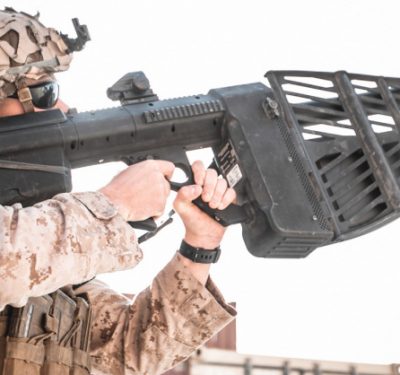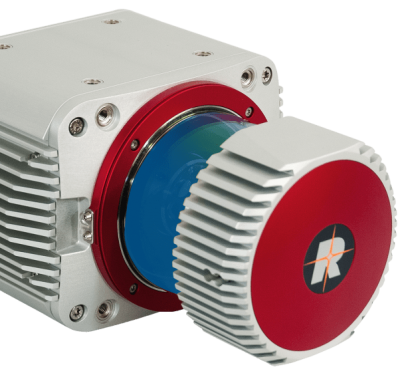With coaxial rotors and a rugged cylindrical form, Ascent AeroSystems is reshaping expectations for small UAS. Under CEO Peter Fuchs and with backing from Robinson Helicopter Company, the firm is delivering mission-ready drones built for autonomy and all-weather operations in the world’s toughest environments.
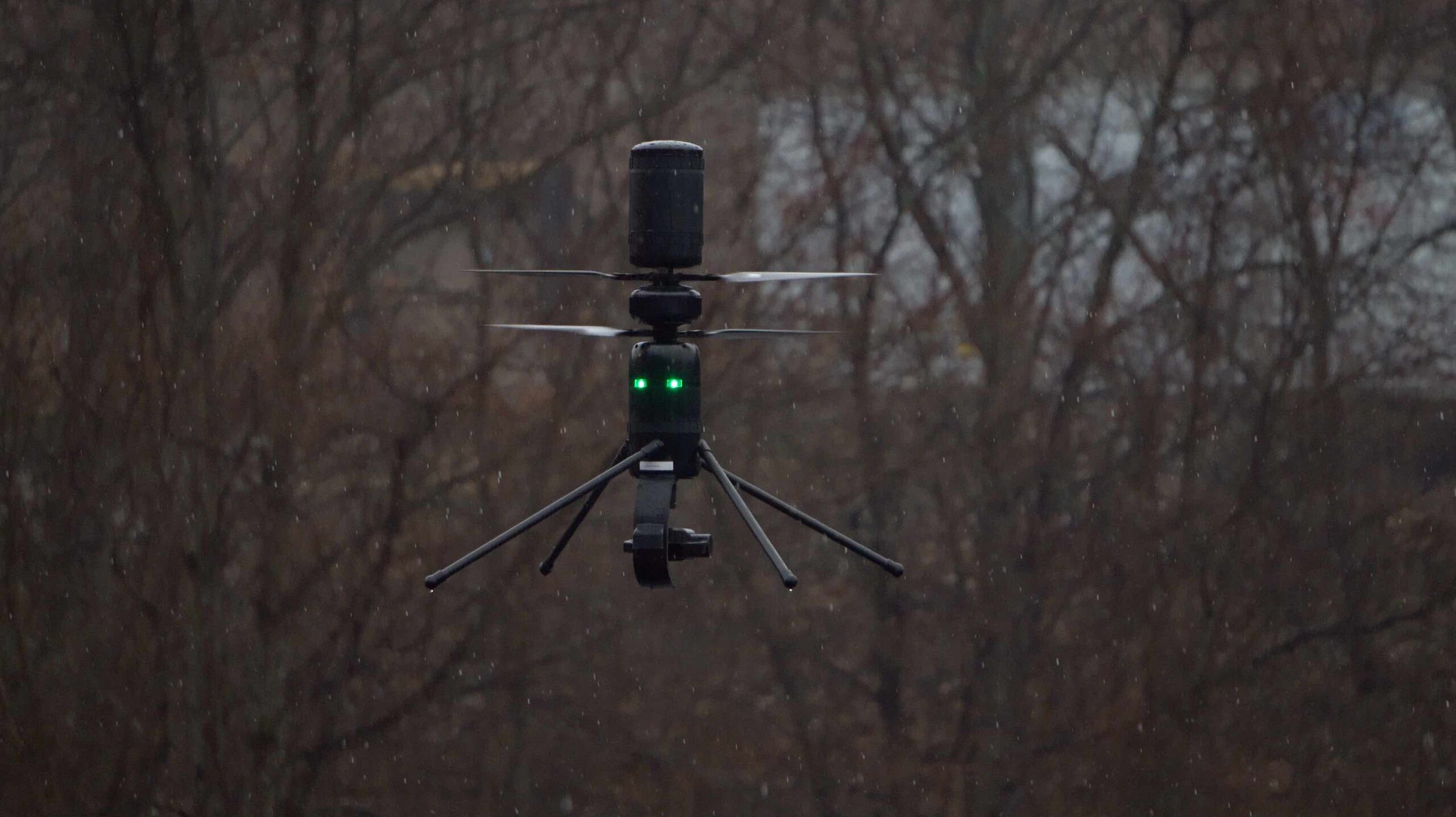
In a market crowded with sleek quadcopters and fixed-wing hybrids, Ascent AeroSystems has chosen a different path—vertical, coaxial and cylindrical. With a foundation in aerospace engineering and a growing portfolio of rugged UAVs, the Massachusetts-based company is challenging traditional assumptions about what a drone should look like—and more importantly, what it should do in the field.
At the helm is CEO Peter Fuchs, a licensed fixed-wing pilot whose career spans corporate aviation, aviation safety systems, consulting, aerospace startups, and most recently, the successful acquisition of Ascent by the iconic Robinson Helicopter Company. In an exclusive interview with Inside Unmanned Systems, Fuchs shared the company’s strategic vision, technical differentiators, and why the coaxial form factor may be the key to unlocking the next generation of ISR, autonomy and industrial-scale aerial operations.
FROM SPRITE TO SPIRIT: A STARTUP’S TAKEOFF
Ascent’s journey began not in a defense lab, but on a DIY Drones website and with a Kickstarter campaign for a rugged, highly portable consumer-focused drone. “Back in 2014, we launched the Sprite drone,” Fuchs recalled. “It was a novel product, a cylindrical UAV with coaxial rotors that we knew would resonate with users looking for rugged simplicity.” The campaign raised over $400,000, validating their hunch that form factor mattered—and that performance didn’t need to come at the expense of durability.
What followed was a shift in focus from consumer to enterprise customers, and a steady climb. Working closely with cofounders and aerospace engineers Jon and Nate Maringer, Ascent matured its product line, introducing its flagship SPIRIT platform in 2017. A highly capable, mission-ready aircraft with the ruggedness necessary to meet the needs of public safety teams, industrial surveyors, and government customers operating in the harshest environments. The heavier lift NX30 debuted in 2022, purpose-built for materiel transport of payloads up to 15 pounds. Most recently, Ascent launched HELIUS, the company’s first fully integrated, handheld, sub-250g nano UAV.
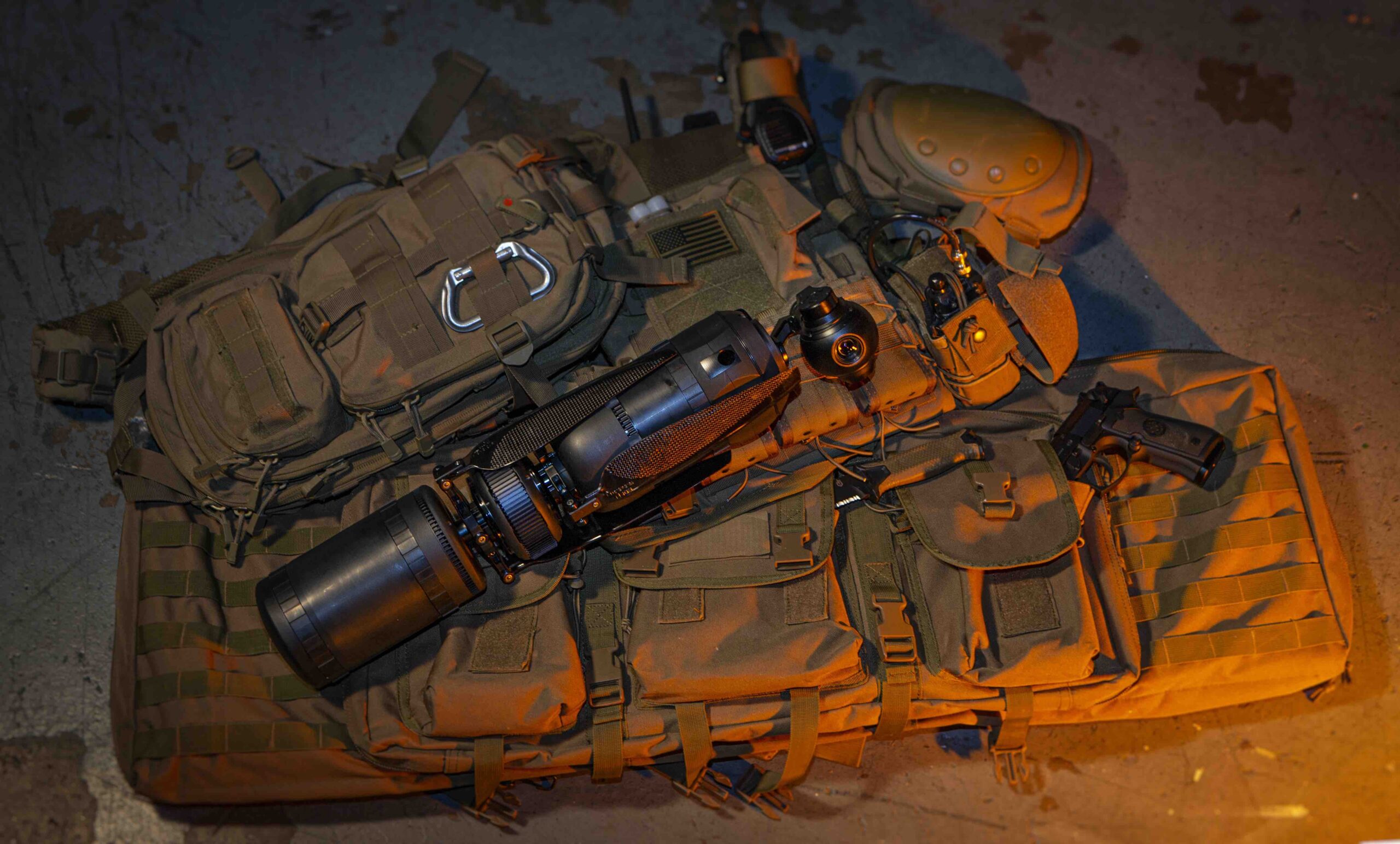
CYLINDRICAL FORM FACTOR
Ascent AeroSystems began with a clean-sheet design, unconstrained by legacy drone architectures or incremental improvements. From the beginning, it set out to reimagine the entire platform around a form factor that inherently serves the mission-critical operations of the warfighter, first responders and public safety teams. At the heart of that design is a unique combination: a coaxial rotor system paired with a cylindrical airframe, delivering a fundamentally different approach to UAS.
Unlike traditional multirotors with wide arms and exposed rotors, the cylinder is aerodynamic, rugged and highly modular. “A cylinder is a strong, simple, more aerodynamic geometric shape that has fewer exposed parts, operates more efficiently in forward flight, and is more stable in austere conditions,” Fuchs explained. Its symmetry supports balanced propulsion and efficient lift, which contributes to superior flight stability—especially in high winds or confined environments.
Beyond aerodynamics, the form factor also supports a watertight and dust-proof enclosure, making the platform resilient in the harshest operational conditions. In contested and multi-domain operations, where payload survivability and dispatch reliability matter as much as lift and loiter, this integrated design offers a tactical edge. The coaxial rotor architecture enhances thrust-to-size efficiency and simplifies control mechanics by eliminating the need for a tail rotor—ideal for compact, high-performance deployments.
Equally important, the cylindrical form is tactically compact. It packs neatly into a rucksack, takes up less volume during transport, and enables field teams to deploy more systems with fewer logistics. This has significant implications for company- and platoon-level units operating with limited support—where mobility, speed and autonomy can determine mission success. As new DoD acquisition pathways prioritize Modular Open Systems Architecture (MOSA) and adaptable mission sets, Ascent platforms incorporate standardized electrical and mechanical interfaces, allowing operators to quickly swap out sensors, communications packages, or other mission-specific modules. The result is a man-packable ISR and utility drone designed not just for aerial performance, but for seamless integration into evolving CONOPS—such as dismounted reconnaissance, maritime boarding operations, or urban overwatch.
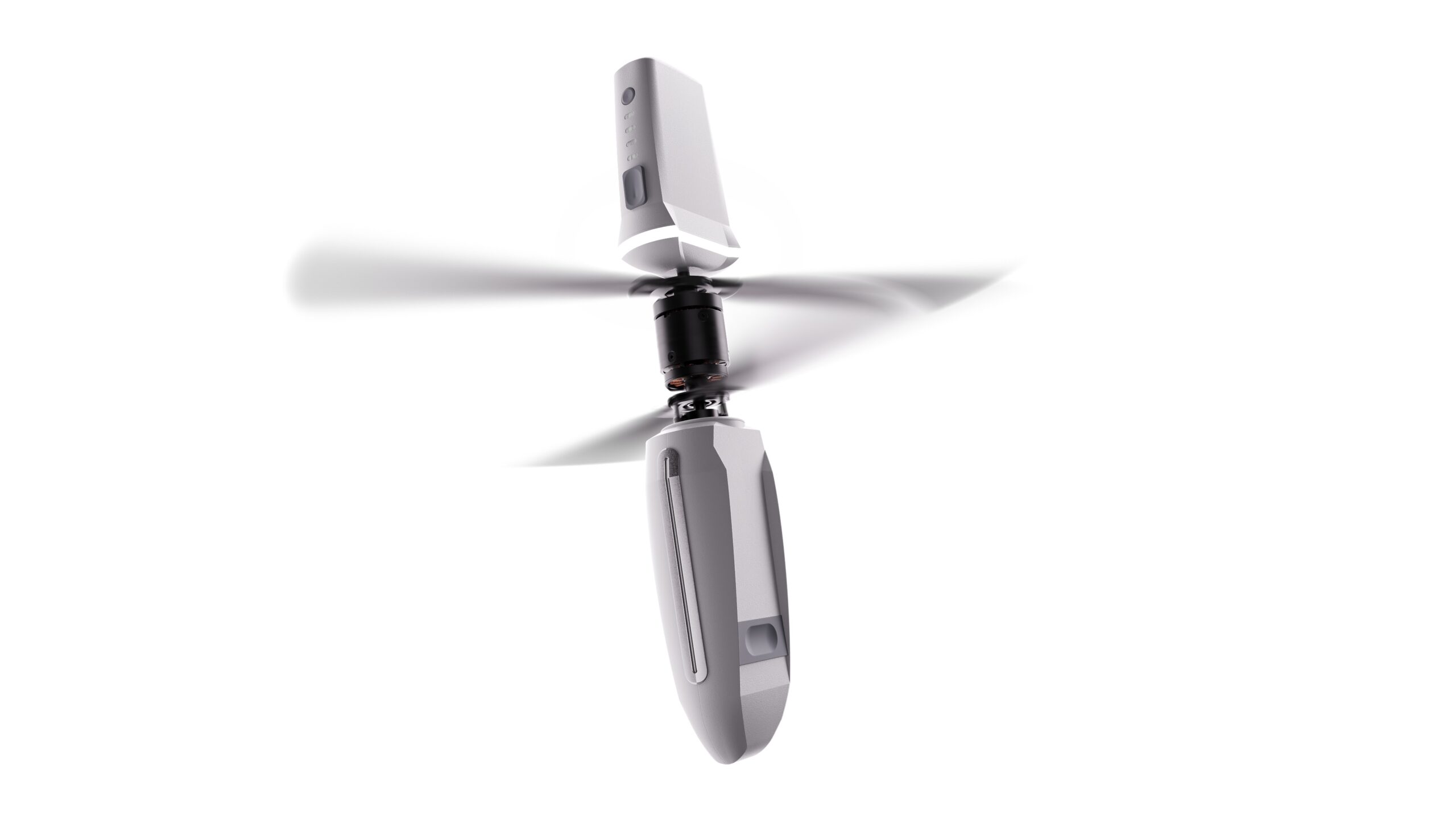
THE COAXIAL ADVANTAGE: COMPACT, CAPABLE AND CONTAINED
So why coaxial?
Fuchs points to physics and mission needs. “Most drones out there are built around an ‘X’ or ‘H’ frame. They’re great in ideal conditions, but they start to fall short when the wind picks up or when you need to deploy from a truck bed in a snowstorm,” he said. “Our coaxial approach—with two counter-rotating rotors stacked vertically—lets us build a drone that’s more compact, more stable, and better sealed against the environment.”
Indeed, according to Ascent’s white paper, the benefits of coaxial UAVs go beyond simple footprint reduction. The cylindrical form factor eliminates vulnerable arms and exposed motors, reducing drag and increasing payload efficiency. “We can pack more lift into a smaller footprint,” Fuchs explained. “That’s not just convenient—it’s operationally decisive.”
Coaxials also excel in wind resistance and endurance. Unlike quadcopters, which suffer from rapidly increasing drag as speed increases, a coaxial airframe actually becomes more aerodynamically efficient when it pitches forward. This allows Ascent’s platforms to fly longer, faster and farther—all while carrying more and consuming less energy per mile.
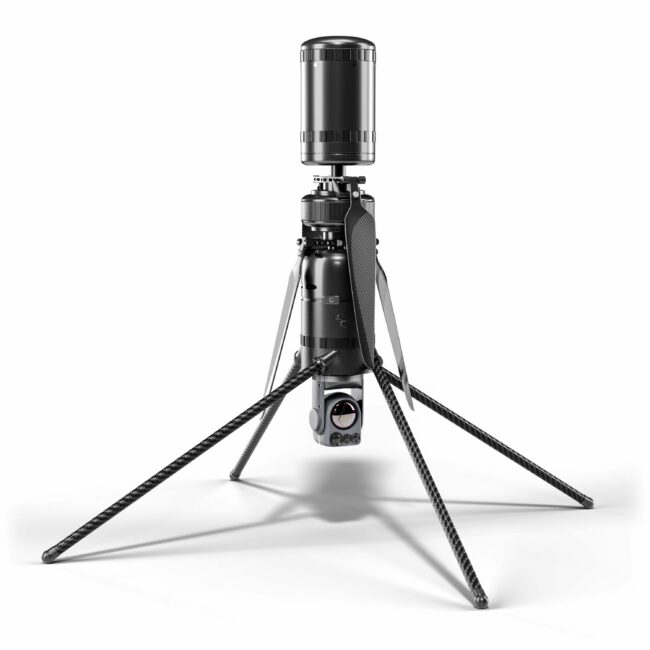
ISR-CENTRIC BY DESIGN
ISR missions rarely happen in calm, sunny conditions. That’s where the SPIRIT and NX30 shine.
Designed for tactical and industrial ISR applications, these UAVs can operate in adverse weather, navigate complex airspace, and integrate a wide range of sensors—from EO/IR cameras to advanced mapping and photogrammetry, LiDAR and multispectral systems. “ISR isn’t just about flying with a camera,” Fuchs noted. “It’s about being able to collect critical, potentially life-saving information when the weather turns, when there’s GPS interference, and when a downlink failure can’t be an option.”
Ascent’s modular “Quick Connect” system supports that mission. With a tool-less payload interface and open architecture, users can swap out sensors or mission packages in seconds, adapting the drone to meet evolving field conditions. “We wanted to make our drones not just high-performing, but field-adaptable. That’s key in ISR operations, where time and flexibility are everything.”
COMPACT POWER: ADVANCED ISR AT YOUR FINGERTIPS
For users needing a sub-250g UAV with industrial-grade reliability, Ascent launched the all-new HELIUS nano UAV earlier this year. With a price point below $4,500 and a coaxial design in a palm-sized package, Helius is positioned as a lightweight ISR and inspection tool that won’t compromise on flight time or wind tolerance.
“There’s no reason why a sub-250g drone has to be a toy. With HELIUS, we’re delivering a real tool—made in the U.S.—for users who can’t afford failure,” Fuchs explained.
This strategic positioning is no accident. With DJI facing restrictions in U.S. government and infrastructure contracts, enterprise users are hungry for domestic alternatives. HELIUS offers that, along with the promise of reliability, autonomy and onshore support. Currently available for pre-order, HELIUS will begin shipping Q4 this year.
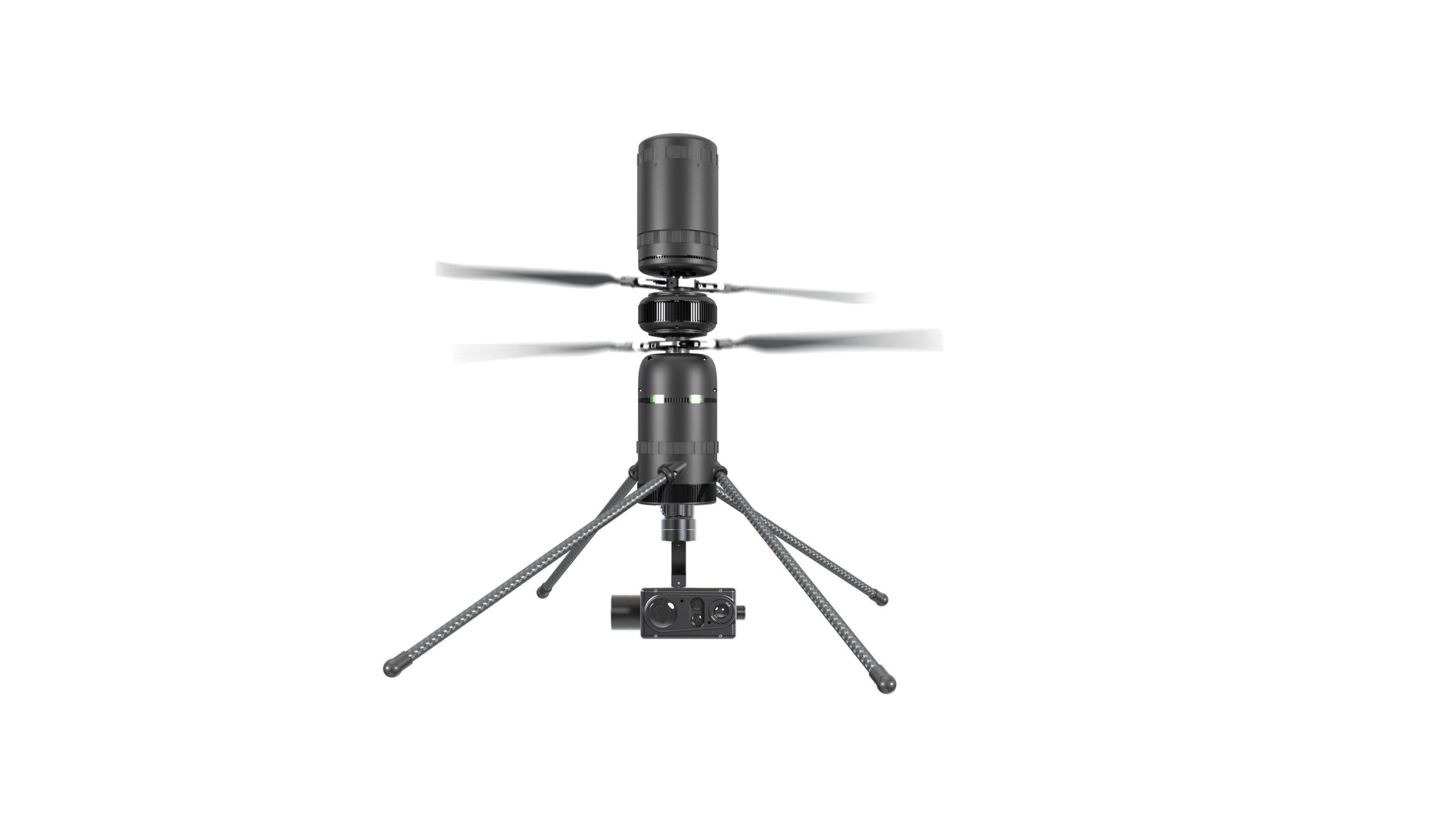
MADE IN AMERICA, BACKED BY ROBINSON
In April 2024, Ascent AeroSystems was acquired by Robinson Helicopter Company—a move that bolstered Ascent’s manufacturing muscle and already strong aviation pedigree. “We’re now backed by a company with over 13,000 aircraft delivered and more than 50 years of FAA-certified production experience,” Fuchs said. “That gives us a supply chain, a quality system, and a production capability that most startups only dream of.”
The acquisition also allows Ascent to scale its manufacturing quickly to address a broader, growing UAV market that includes defense primes, civil agencies, and industrial operators who need repeatable quality and logistics support at volume.
As drones take on more critical roles in defense and security missions, the demand for autonomous capability—especially in GNSS-denied or EW-contested environments—continues to grow.
“We’re preparing our systems to think and act independently,” Fuchs said. “That starts with leveraging robust onboard inertial navigation and a highly efficient, resilient airframe that minimizes dependency on fragile external signals.” Combined with autonomy stacks from partner integrators, the company aims to deliver ISR platforms that can continue their mission in contested airspace—something increasingly expected in both defense and disaster-response scenarios.
SERVING DUAL-USE MARKETS
While defense and public safety are clear growth areas, Ascent has always served both commercial and civil industrial markets. From powerline inspection to precision agriculture applications, the need for robust, portable drones is growing across sectors. The same attributes that make SPIRIT ideal for border patrol—weatherproofing, long endurance, modular payloads—make it valuable for infrastructure inspection and mapping as well.
“You shouldn’t need a different drone for every mission,” Fuchs emphasized. “Our platforms let you change payloads, not aircraft.”
This dual-use philosophy reflects the evolving regulatory and commercial landscape, where budgets are tighter, and performance must be proven across verticals.
LOOKING AHEAD: THE COAXIAL ERA?
Ascent AeroSystems is not alone in seeing value in coaxial design. From Sikorsky’s future vertical lift ambitions to growing interest in tail-sitting drones and hybrid lift systems, coaxial rotorcraft are gaining new momentum. But Ascent is the only U.S.-based OEM bringing those advantages to the small UAS segment—and doing so at scale.
“Coaxials are simple, efficient, and incredibly rugged,” Fuchs said. “We believe they represent the most practical path forward for a wide range of mission sets—from tactical ISR to environmental monitoring to industrial inspection.”
Backed by Robinson’s FAA-certified aviation pedigree and driven by the operational demands of today’s mission-critical users, Ascent AeroSystems is set to move coaxial UAVs from the margins to the mainstream—delivering compact, rugged and efficient platforms ready for the next generation of ISR and beyond.


